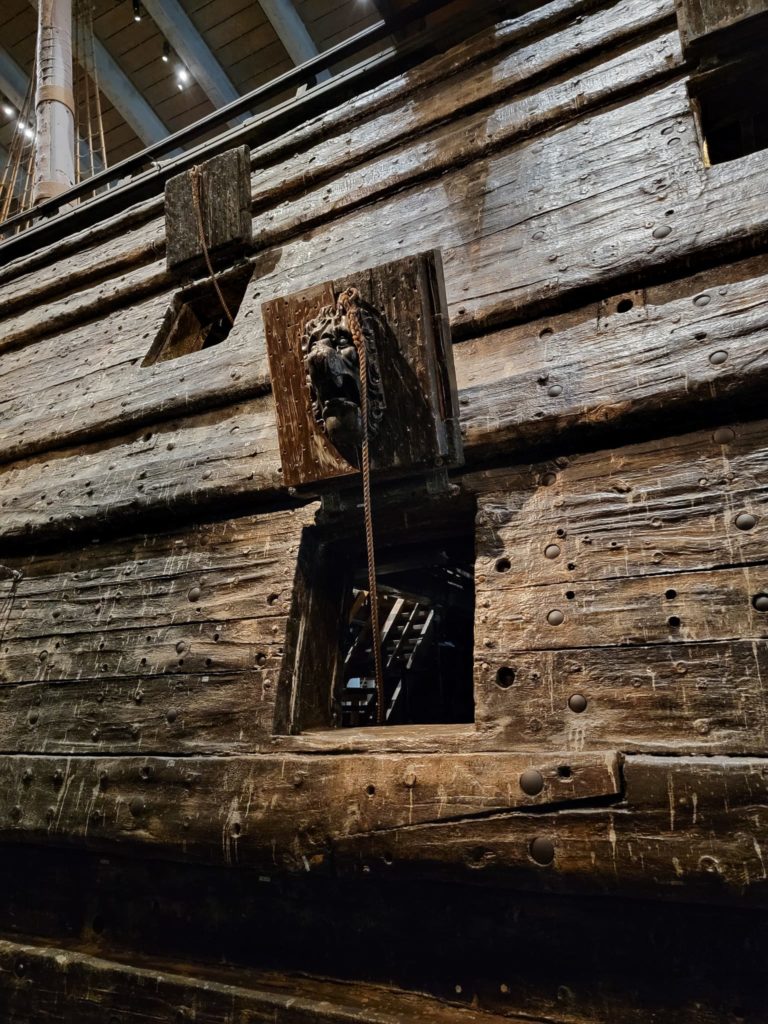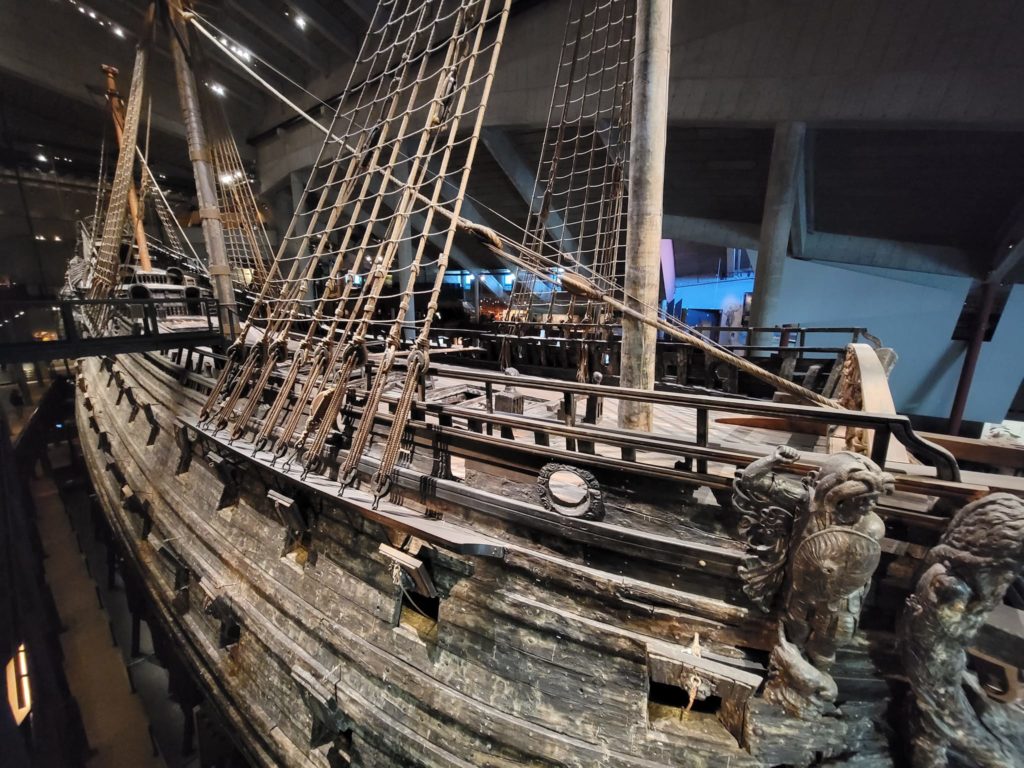We took the opportunity to visit the Vasa Museet while in Stockholm and it is a one of a kind, must see experience. The boys enjoyed their experience in their own way while Toren played tour guide to Asher. Super cute and really allowed Dave and I to soak up all the information about this historical ship.

Enemies were greeted by ornate, colorful, but intimidating carvings when the canons were displayed, but Vasa never even got that opportunity. The Vasa sank on its maiden voyage on the afternoon of August 10, 1628 just 1500 meters away off the island of Bornholm. 50 people drowned during the unfortunate event.

Look at how many canon port holes there are and that’s just one side of the ship. After the ship sank the canons were the first thing to be recovered by 2 men back in 1663 and 1664 with the use of a diving bell. Toren models the use of the diving bell in a photo below. After the canons were recovered the ship was left in peace and essentially forgotten.

For 333 years the Vasa remained under water in a shipping canal of Stockholm, 32 meters below, until a young Anders Franzen went looking for it and discovered its location in August 1956. At that point a committee got together to bring Vasa up and out of the water which didn’t happen until April 1961.

During its time under water the ship sank further into the mud and clay and various objects lay scattered around the ship itself which were brought up and catalogued before they could begin the long process of moving the ship slowly and closer to shallower waters.

It’s just so BIG! It’s like out there! Yeah, look at that stern, quite ornately carved and this is not the original color of the boat before it sank. However, also check out how narrow the stern is in comparison to the overall height of the masts. The way I understand it is that the width of the ship was too narrow to accommodate the overall height which then didn’t allow the ballast to carry enough weight. Whoops!

This is a close up shot of the stern for admiring the detailed carving. It’s quite impressive the amount of work that was involved in making this ship as well as the amount of time and the number of people it took to put it all together. You can see the ship from various levels all over the museum; it has 7 levels.

Apparently, the king himself dictated the Vasa’s measurements and no one dared argue against him. It was meant to be a floating work of art as well as a weapon of war. However, when the ship’s seaworthiness was tested, the architects knew there were concerns, but the king’s ego dictated it was going to set sail.

How is it that it stayed so well preserved after being under water for soooo long, you ask? Well, the ship was brand new, built chiefly of oak heartwood, an even water temperature was consistent over the centuries, the salinity of the Baltic sea is 0.4% and neither ice nor currents had caused any damage.

Not to mention, ship worms don’t really thrive in this water because of the temperature, the salinity level and the fact that Stockholm had been dumping its waste in the water for centuries which kept the oxygen level in the surrounding water low.

Ever since Vasa has been salvaged they have been monitoring it at every moment to preserve and conserve for as long as possible. It even has 400 measurement points to monitor it so it doesn’t shrink and crack. Currently the Vasa weighs 800-900 tons, think 6 jumbo jets. It is the largest ship ever salvaged and conserved and it has 95% of its original parts. Who knows how much longer this piece of history will be preserved.

This is what it looked like in its hey”day”. Can you believe it? It would have been a marvel to see. It was painted in colors of Baroque style and it took 3 steady years to build. It was roughly 226 ft (69m) x 38ft (11.7m) x 172 ft (52.5m).

This is a diving bell that would have been used to recover the canons. A priest wrote, “that a man stands on a plate of lead clad in leather handing from the bottom of a bell. He has a wooden hook with a stave of iron, he is lowered to a depth sixteen times the height of the man. He comes up after 15 minutes shivering with cold but in the summer he can stay down for 30 minutes.”

This is the outside of the Vasa museum, but if you look at the height of the masts you can see just how tall this ship was as this is representation of the total height.